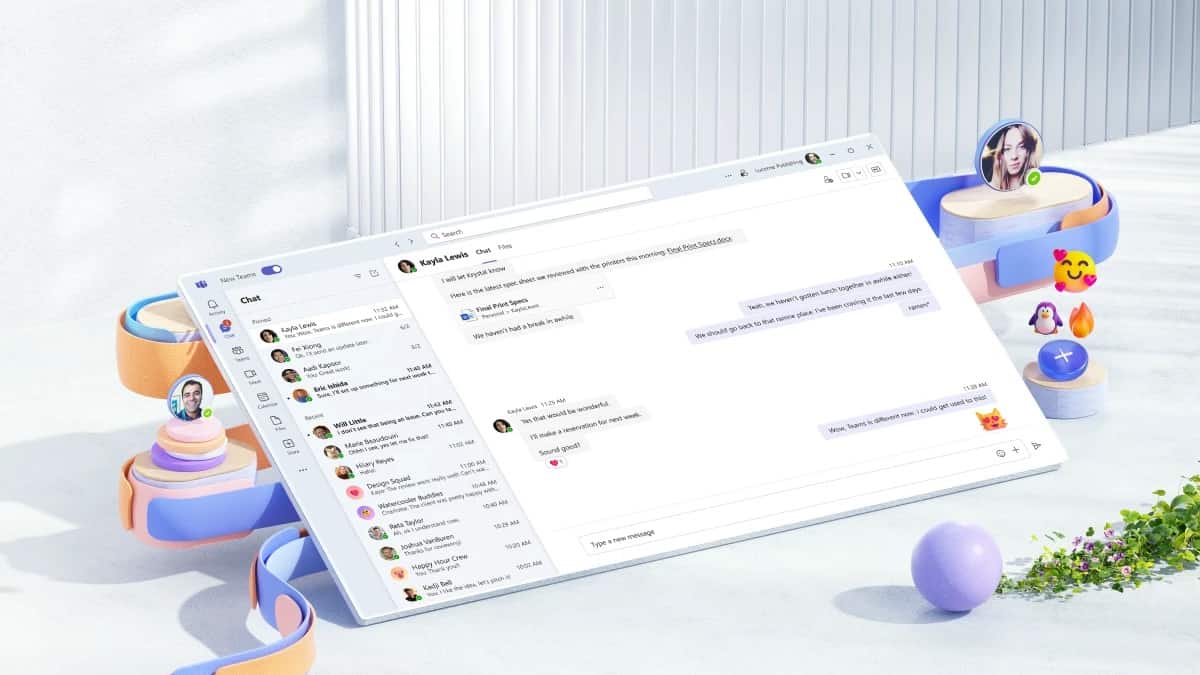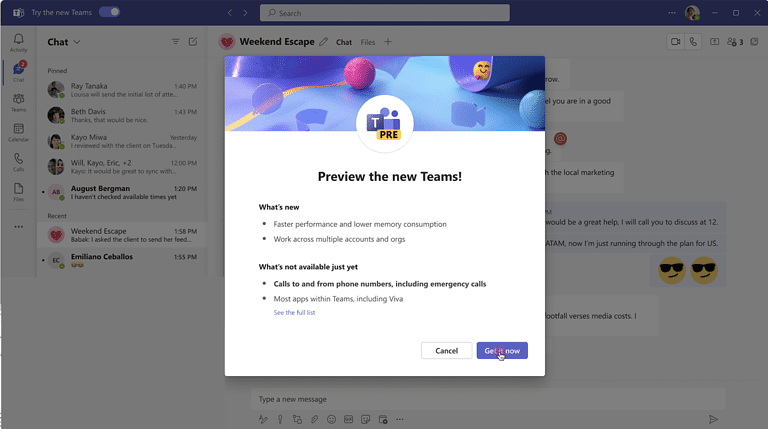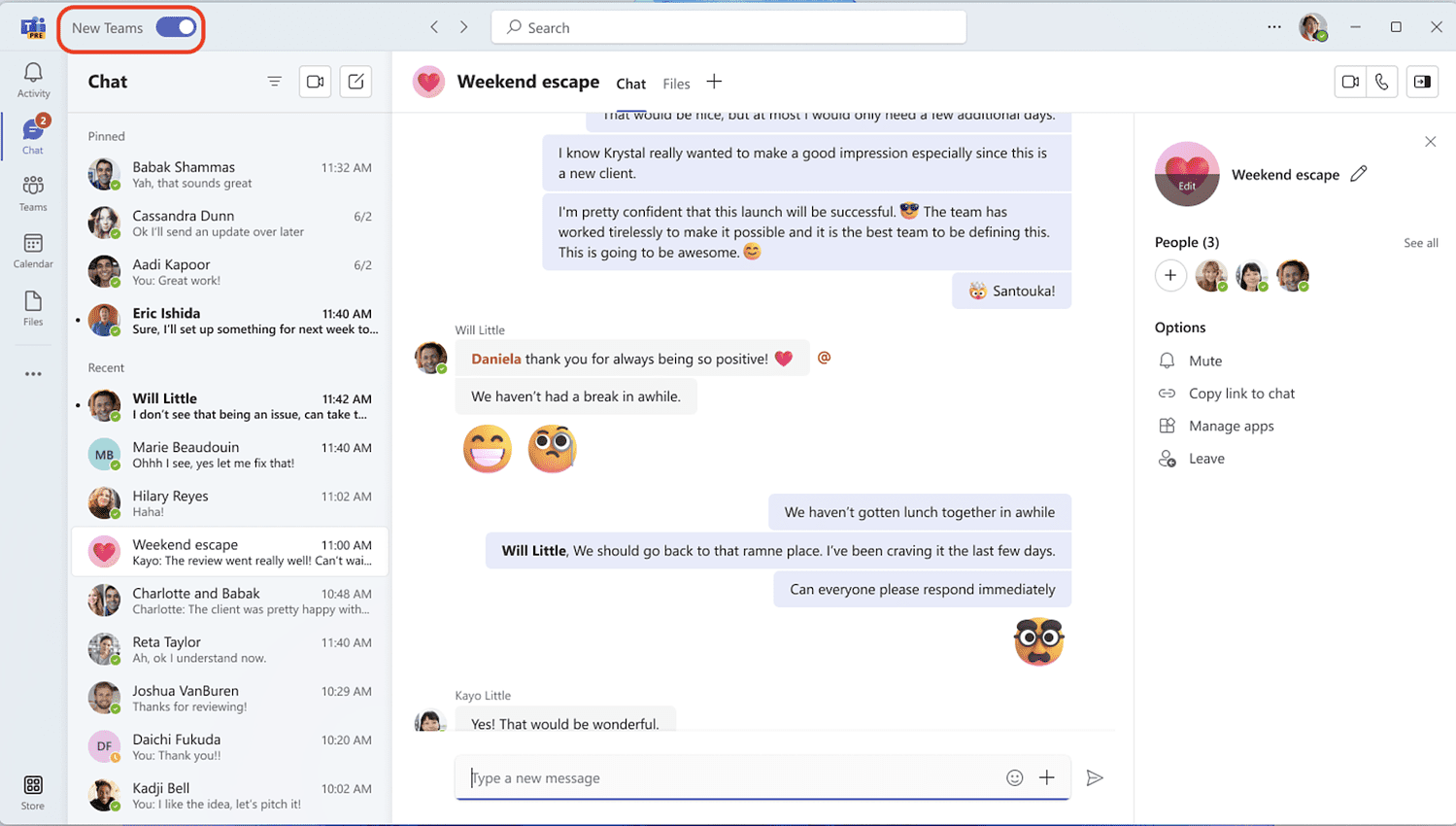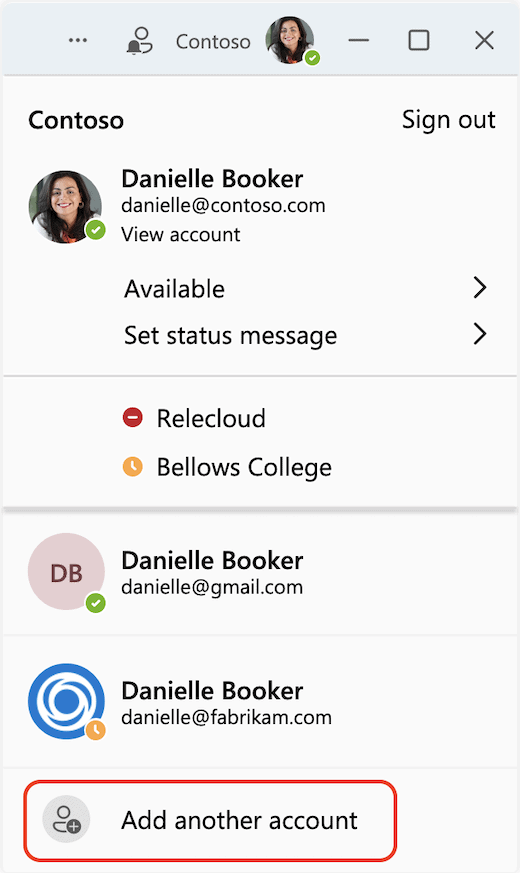Microsoft recently made available a new, updated version of Microsoft Teams. Also called Microsoft Teams 2.0. The company claims it “has been reimagined from the ground up,” resulting in a “faster, simpler and more flexible experience.”
Besides a total rebuild of the Microsoft Teams app, Microsoft also added several features to Teams compared to the classic original Teams application. However, the decrease in CPU and memory usage seems to stand as primary.
Users have been complaining that Teams is sluggish, for years. In addressing these complaints, Microsoft made significant performance enhancements. Installing the Microsoft Teams 2.0 app should be three times faster, as should starting or attending meetings. According to Microsoft, the new Teams desktop client should use 70% less disk space and 50% less memory.
Read Also: New version Microsoft Teams twice as fast as current app
To activate the new version, the system administrator of your organisation must allow you to install it. If your organisation allows it, there is a toggle in the top left corner of the classic Teams. So, let’s look closer, what did Microsoft change in Teams 2.0?
Microsoft Teams transition for speed
Microsoft chose open-source software and a variety of custom controls for the original classic client of Teams when development started in 2015. Tools like Electron and Angular facilitated the fast launch of cross-platform web and desktop clients. As Microsoft expanded teams, the newer capabilities started weighing on the device resources, creating a demand for a new architecture.
One of the most important choices for Teams 2.0 was switching from Angular to React. As a result, the company touts a smaller, more modular codebase, better support for shareable components and improved responsiveness. The company first introduced some of the components, built using React, into the classic Teams client to ensure a seamless transition for their customers.
While this made some significant performance improvements in the components, it also resulted in overall slowness. It ended up using more resources because two frameworks were running at the same time.
The consumer client was then created from the bottom up using the new architecture. Microsoft later added support for the commercial capabilities to the consumer client codebase in order to support this new Teams 2.0 release. This validates the performance improvement findings.
Large scale meetings
Beyond point-to-point and small-group cooperation, Teams meetings are frequently used for extensive communications at an organizational or corporate level.
Microsoft made concentrated performance and scale improvements on big meeting experiences in Teams, where there are frequently thousands of simultaneous attendees, and there is extensive use of video and chat.
Some of the improvements include batching and lowering IPC events, cutting down on UI renders and removing noisy experiences. With these changes, meeting join delays are shortened, and application responsiveness is increased regardless of the size of the meeting.
Microsoft also created a more effective meeting stage layout for better video management. This facilitates smoother navigation. For media processing, the company switched to a native compositor and renderer. With this, the new video architecture uses 50% less power consumption.
With a “the more the merrier” mentality, the switch also makes it possible for the Teams app to handle more intricate and sophisticated video features on a wider range of hardware, suggesting that a larger audience can attend sessions.

MSIX support and Microsoft Intune
Furthermore, Microsoft has added MSIX support to help distribute the client to Windows devices. This significantly increased installation and app update reliability and reduced network bandwidth and disk space utilization.
The installation of the new Teams 2.0 client is located in the Program Files folder, a device can support all users with a single install. IT system admins can also use Microsoft Intune to install the app for clients automatically.
The MSIX installation of Teams in the program files folder instead of the user profile has additional security advantages. This folder it is not writable by the user and it provides greater defense against attacks that aim to change the installation.
Enhancing the system’s security also involves having a stricter Content Security Policy and implementing Trusted Types. These actions have made the system resistant to cross-site scripting assaults.
Multi-Tenant Multi-Account support
With Teams 2.0, users can enter into numerous work or school accounts (or as a Guest in other organizations) without having to sign in on multiple web browsers. This is thanks to the added Multi-Tenant Multi-Account (MTMA) support.
Users can get real-time notifications from all their accounts (and all associated organizations) when they add them to their Teams 2.0 app. They can also take part in meetings, chats and calls while logged into multiple accounts and organizations without having to leave a call or meeting in order to swap accounts or organizations.
Additionally, they can alter their status for every organization and account separately.
Tip: What is Microsoft Loop? App syncs realtime across M365, staying in the loop
Updated look for Microsoft Teams 2.0
Along with performance enhancements, Microsoft has given Teams 2.0 a visual makeover to better complement Windows 11. Microsoft has changed the canvas color from gray to white and the classic Teams’ purple color features much less throughout.
In addition, Microsoft Teams will now switch to dark mode automatically. The app now also includes group profile pictures and theming. To feel more like a native Windows app, the new Teams also now utilizes native materials such as Windows 11’s Mica translucency.
Continuing a meeting with a “hands up” reaction – even after the question has been asked – is a unanimous experience for Teams users. In the new version, Microsoft automatically lowers the speaker’s hand after they have finished speaking.

Limitations
Although the updates do enhance the user experience, there are some functionality let-downs in the preview version. For the time being, some key components from the classic Teams are missing in the new Teams 2.0, including breakout rooms and call queues.
Alongside these limitations, there are minimum system requirements to be able to run the app. Currently, it is only available to users with Windows 10 Vibranium 10.0.19041 and Microsoft Teams (work or school) version 1.5.00.29212 or higher.
Microsoft says that support for Mac OS and the web version are still in development.
Great step forward
All-in-all Microsoft is taking a huge step forwards with its Microsoft Teams client. The biggest complaints of Teams users will be solved with this new version. Especially the performance enhancements will make Teams usage a lot smoother. People that work for multiple customers can now login into multiple 365 accounts from different organisations, without having to log out and log in again or use multiple browsers.
The development of new and improved Microsoft 365 solutions is significant and we are curious to see what comes next.
Also read: Microsoft adds CoPilot AI to Microsoft 365


